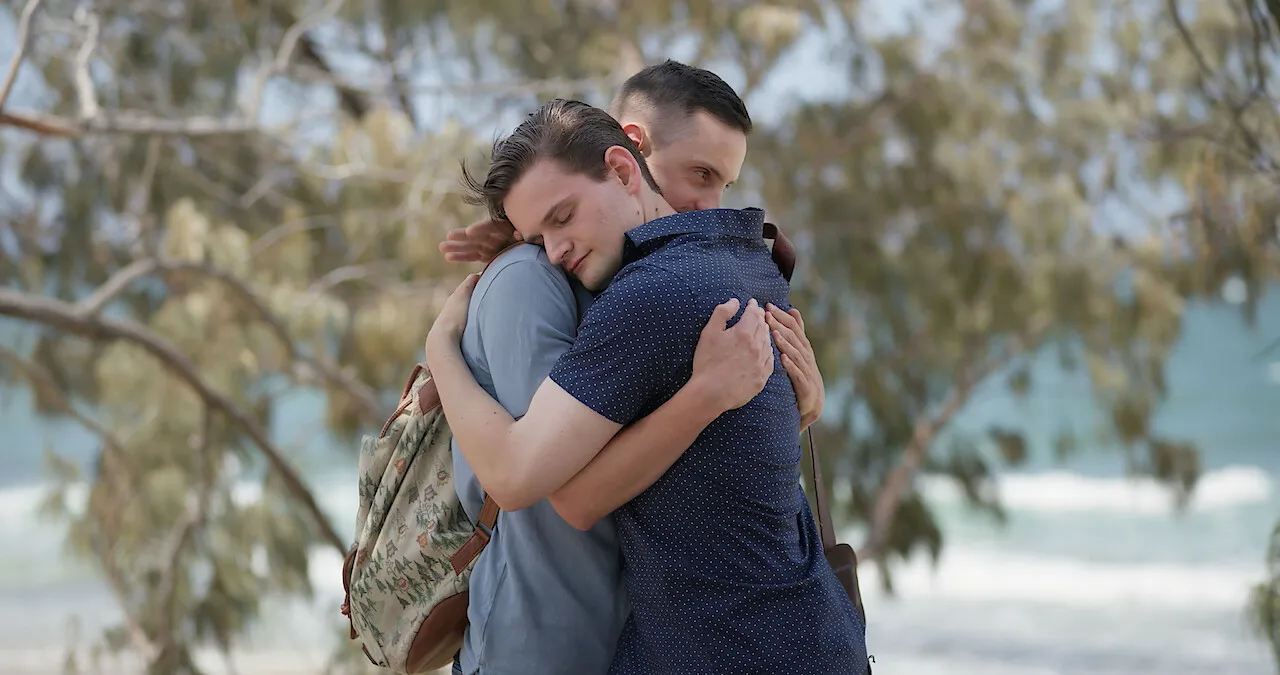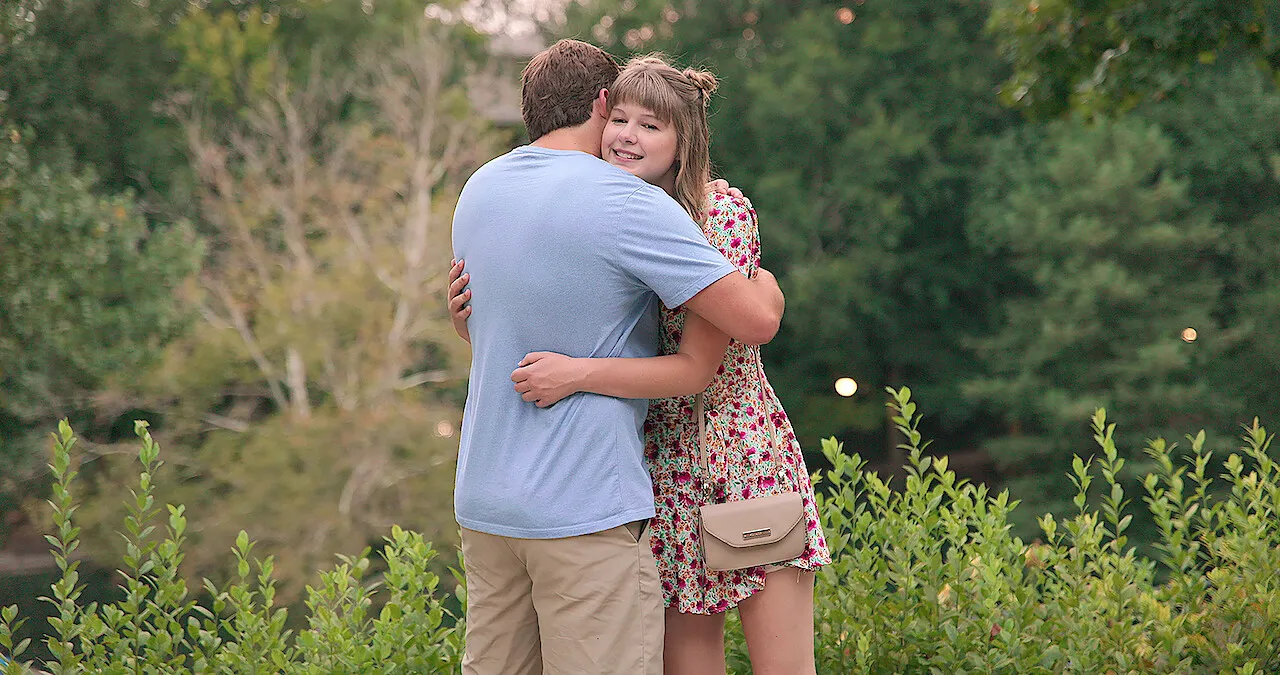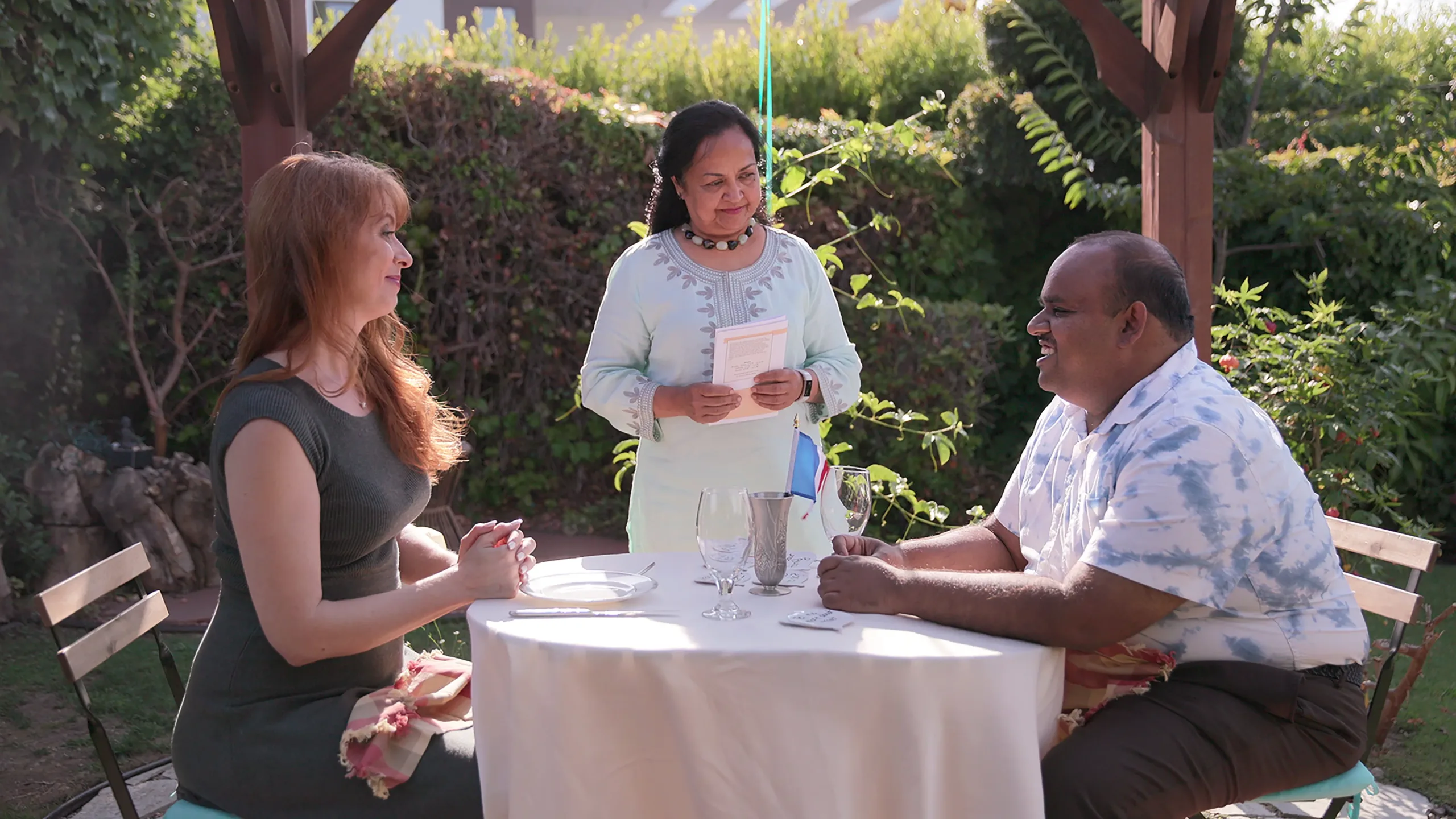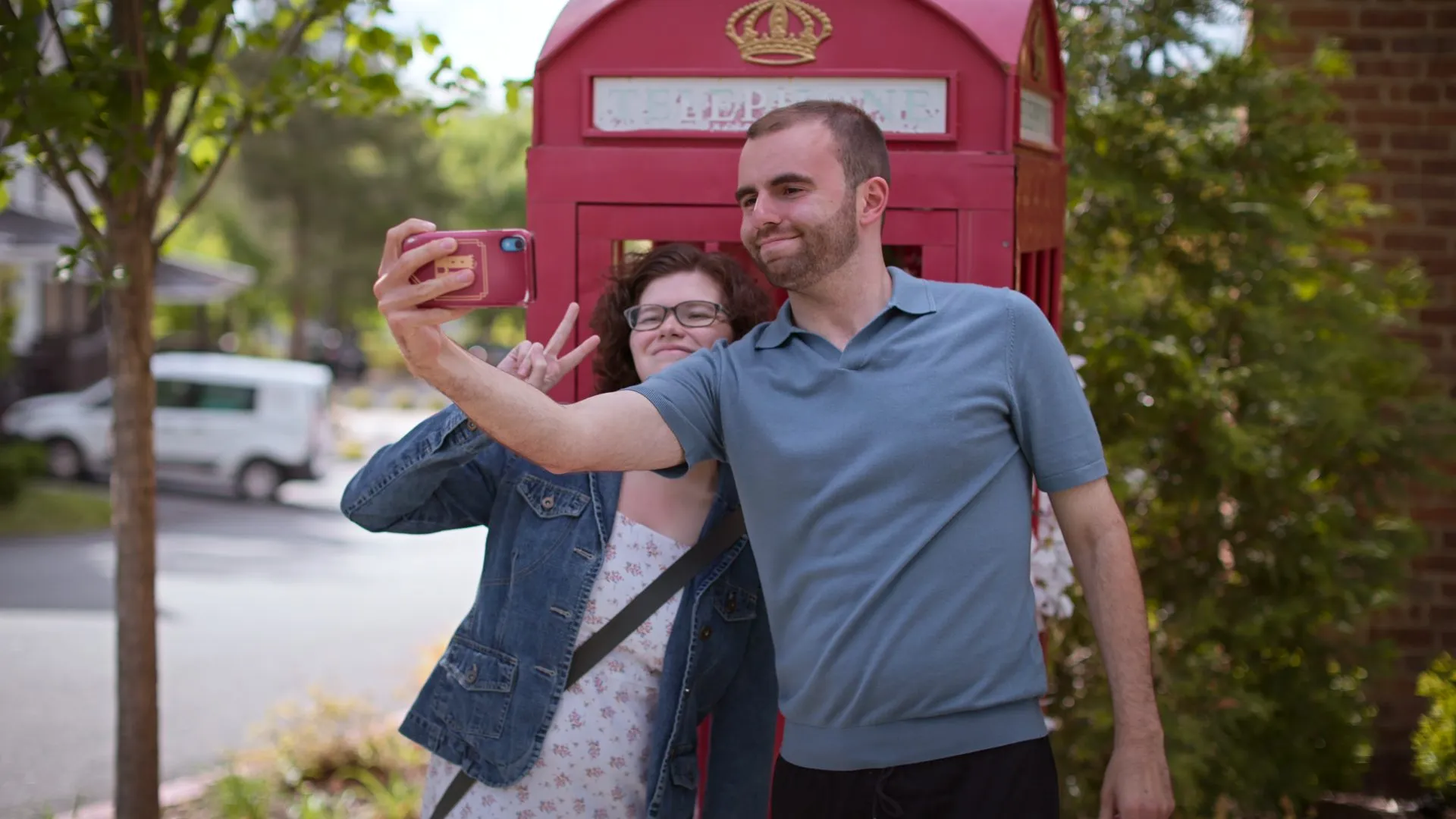The docu-series Love on the Spectrum U.S. returns for its third season, a persistence that signals more than just scheduling success; it underscores a quiet but steady recalibration in how television approaches human experience, particularly on the vast expanse of streaming platforms.
This series, which intimately chronicles individuals on the autism spectrum as they navigate the intricate, often bewildering, pathways of dating and relationships, has carved out a distinctive space for itself. Its continued presence suggests an audience receptive to narratives that deviate from the well-trodden, often performative, landscapes of contemporary dating shows.
Season three reacquaints viewers with familiar faces while also introducing new personalities, each embarking on deeply personal explorations of romance, companionship, and self-understanding.
The program maintains its commitment to framing these experiences with a notable warmth and profound respect—a production choice that, in itself, feels like a deliberate counter-narrative to the manufactured drama prevalent elsewhere in the genre. This season promises further smiles and genuinely poignant moments, offering a heartfelt view into the universal longing for connection, presented through a lens that champions authenticity over artifice.
Returning Participants: Evolving Journeys and Deepening Bonds
The return of familiar faces in Love on the Spectrum U.S. offers more than comforting continuity; it allows for an observation of growth, a luxury seldom afforded in the ephemeral world of reality television. This longitudinal gaze is where the series subtly pushes against conventional formats, allowing viewers to witness genuine evolution.
Abbey and David, for instance, approach their third anniversary, their discussions of future plans moving their “storybook love” into a realm of tangible, long-term commitment that enriches the public understanding of neurodivergent relationships. Their interactions provide a quiet counterpoint to the often-sensationalized portrayals of romance.
Similarly, Dani and Adan’s navigation of their first anniversary, particularly Dani’s articulation of desires for greater physical intimacy, marks a significant representational step. The program approaches this with a sensitivity that allows for an exploration of adult relationship dynamics, including the nuanced communication needed to bridge Dani’s vibrant energy with Adan’s more reserved nature—a dance familiar to many couples, spectrum or not. Adan’s thoughtful photobook becomes a small testament to diverse expressions of affection.
The path for James remains a more intricate one. His continued search for a “queen,” set against the backdrop of a speed dating event, highlights his specific preferences—no children, no dogs—and the candid presentation of his yawning stim. This scenario raises questions about the pressures of conventional dating formats on neurodivergent individuals and the societal tendency to pathologize rather than understand such traits. His parents’ earnest, if sometimes direct, advice further layers this depiction of a supportive, yet complex, family dynamic.
Connor, however, emerges with a striking increase in self-possession. His clear articulation of dating requirements (the infamous brunette preference) and his direct-to-camera asides—at times even instructing the production to “cut”—signal a fascinating shift in participant agency. Here, the series almost winks at its own construction, allowing Connor to co-author his narrative in a way that feels refreshingly modern and speaks to how individuals are learning to manage their portrayal in the media age.
His hilariously honest exchanges with his family, especially his mother, offer moments of unvarnished, relatable truth. Tanner, with his unwavering optimism and energetic pursuit of an equally outgoing partner, continues to infuse the season with a bright, good-hearted spirit, a welcome portrayal of joy.
New Faces: Fresh Perspectives and Budding Romances
The introduction of new participants in any established series carries the weight of expectation, and in Love on the Spectrum U.S., it also offers a fresh lens on the diverse experiences within the autistic community. Madison arrives with a quiet strength, her independent life and creative outlet in jewelry making immediately showcasing a narrative of capability and self-expression that sidesteps common tropes.
Her organized collections and the visible strategy of bringing dolls for sensory comfort during social outings are presented not as quirks, but as practical, personalized tools for navigating the world—a subtle but important distinction that demystifies autistic ways of being. The presence of Jennifer Cook, the show’s dating coach, in Madison’s preparation, also normalizes seeking support, a pragmatic touch.
Then there is Pari, whose entrance significantly broadens the season’s representational scope. Her passionate enthusiasm for the MBTA (Boston’s public transit) is matched by her open embrace of her bisexuality and her autistic identity. This confident intersectionality is a potent statement in a media landscape still grappling with nuanced portrayals.
Pari’s journey towards self-acceptance, supported by her “Railfans” friend group and her resilient mother, Esme, provides a rich narrative. The frankness with which Pari and Tina later connect is striking. Their first date unfolds with conversations about late-in-life autism diagnosis, the phenomenon of masking, and the under-diagnosis of autism in individuals socialized as girls—topics of immense societal relevance, seamlessly woven into their budding romance.
Their shared experiences—from both identifying as bisexual and navigating first same-sex dating experiences, to commonalities like orange cats and Jewish heritage, even a darkly humorous “Dead Dads Club”—paint a picture of profound, multi-layered resonance. The delightful awkwardness leading to their first kiss, Tina’s thoughtful consideration of Pari’s celiac disease, and their eventual joyful public displays as a couple (Pari dubbing Tina her “T-Princess” during shared train rides) are rendered with a sincerity that feels groundbreaking.
Tina’s subsequent public reflections on feeling empowered to be “unapologetically Autistic” thanks to Pari’s influence speak volumes about the transformative power of such connections, subtly positioning the show as a catalyst for, not just a reflector of, personal liberation.
Thematic Exploration: The Human Element of Dating on the Spectrum
Beyond individual narratives, Love on the Spectrum U.S. Season 3 resonates through its thoughtful engagement with several core human experiences, reframed through the lens of autism. The program’s dedication to authenticity remains its most compelling attribute, offering what feels like an unvarnished window into the genuine experiences of its participants.
This is not the curated vulnerability often paraded in reality television; rather, moments like James’s mother’s palpable distress after a challenging speed dating event, or Dani and Adan’s frank discussions about relationship hurdles, possess a rawness that commands respect. The production’s commitment to allowing these individuals to be seen, seemingly without overt judgment or manipulative editing, is a quiet act of defiance against exploitative media practices.
This environment appears to cultivate noticeable personal development. The burgeoning self-assurance in returning participants like Connor, who becomes more direct in articulating his needs and boundaries, is particularly striking.
This season frequently touches upon the concept of “unmasking”—the conscious decision to shed a lifetime of practiced conformity—presenting it as an empowering reclamation of authentic selfhood. Such portrayals contribute to a broader societal conversation about neurodivergent identity and the often-invisible labor involved in navigating a predominantly neurotypical world.
Furthermore, the series functions as a subtle instrument of public education. The depiction of sensory overload during one of Madison’s dates, for instance, is handled with a clarity that fosters understanding rather than spectacle. By showcasing a spectrum of personalities, communication styles, and social approaches—including the vital representation of queer experiences through Pari—the program effectively dismantles monolithic stereotypes of autism. It invites viewers to appreciate diversity within diversity.
Ultimately, beneath the specificities of life on the spectrum, the show underscores the universal quest for connection. The familiar flutters of anticipation before a date, the joy of a shared laugh, or the sting of disappointment are rendered with an honesty that bridges experiential divides, reminding us of the shared emotional landscape we all inhabit.
Production and Storytelling: Crafting a Respectful Narrative
The production of Love on the Spectrum U.S. operates with a stated ambition to foster understanding, a goal that generally informs its documentary-style approach. There’s a palpable effort to create an environment where participants appear comfortable enough to be themselves, allowing for a degree of authenticity that is the show’s primary strength.
The editing, for the most part, skillfully weaves together disparate narratives, maintaining a gentle flow and building anticipation for relationship developments without, typically, resorting to overt sensationalism. This careful construction helps in generating genuine emotional investment from the viewer.
Narrative arcs are clearly delineated, particularly for returning individuals like Connor, whose emotional evolution forms a compelling through-line, or Abbey and David, whose progression into a new chapter of their relationship offers a heartwarming trajectory.
The season finale, as a result, lands with moments of sincere joy and affecting tenderness. The visible presence of support systems—families, friends, and autism expert Jennifer Cook—is a significant production choice, underscoring a communal aspect to the individuals’ journeys and providing context and insight that enriches the viewing experience. Cook’s contributions, in particular, lend an informative layer to the proceedings.
However, the tapestry of production is not without its more complex threads. Instances where editorial decisions appear to override a participant’s expressed discomfort—such as retaining footage Connor explicitly asked to be cut due to embarrassment over a misunderstood phrase—raise pertinent questions.
Such choices, while perhaps intended to present an unfiltered reality or even a moment of relatable awkwardness, sit uneasily alongside the overarching aim of empathetic portrayal, nudging into territory where participant agency feels diminished for the sake of a “good” television moment.
Similarly, the structural decision to introduce key new figures like Pari later in the season subtly shapes the viewer’s engagement, concentrating certain representational milestones towards the series’ midpoint rather than integrating them from the outset. These are not necessarily failings, but they are notable aspects of the crafting process that invite reflection on the delicate balance between respectful documentation and compelling televisual storytelling in the current media landscape of 2025.
Season Reflections and Lasting Impressions
This third season of Love on the Spectrum U.S. solidifies its standing as a program that offers more than fleeting entertainment; its strength lies in the consistent presentation of endearing individuals embarking on genuine quests for connection, fostering depictions of personal growth and self-discovery that resonate deeply.
The emotional authenticity captured in many of the participants’ stories is a testament to a production that, at its best, prioritizes human experience, a quality that feels increasingly valuable in the crowded streaming landscape of 2025.
Certain elements, however, do color the viewing experience. The recurring instances of dates where individuals recognize participants from prior seasons introduce a layer of self-awareness that, while perhaps inevitable for a successful show, subtly alters the dynamics from purely organic encounters to interactions tinged with a pre-existing public persona. One might also ponder if the structure of the dates themselves, often adhering to familiar social scripts, could evolve to present a wider array of interactions, perhaps even more tailored challenges that could yield deeper insights.
Despite these considerations, the program’s contribution remains significant. It provides a consistent, valuable window into the lived experiences of individuals on the autism spectrum, actively encouraging societal conversations about support, understanding, and the diverse forms that affection and relationships can take. It manages to leave viewers with a sense of warmth, not through saccharine sentimentality, but by earnestly showcasing the shared human aspiration for meaningful bonds, a quietly profound offering.
Love on the Spectrum U.S. premiered on Netflix on May 18, 2022, and has released three seasons as of April 2025.
Full Credits
Director: Cian O’Clery
Writers: Cian O’Clery, Karina Holden
Producers: Northern Pictures
Executive Producers: Cian O’Clery, Karina Holden
Cast: Dani Bowman, James Jones, Abbey Romeo, Connor Tomlinson, Tanner Smith, Journey Early, Steve Spitz, David Isaacman, Jennifer Cook
Director of Photography (Cinematographers): Stefan Weinberger, Daniel Hollis, Dave May
Editors: Simon Callow-Wright, Rachel Grierson-Johns, John Rosser
Composers: Mitch Stewart, Adam Gock, Brontë Horder, Dinesh Wicks, Robert Allen Elliott
The Review
Love on the Spectrum U.S. Season 3
This season thoughtfully expands its empathetic exploration of love on the autism spectrum, showcasing profound personal growth and groundbreaking queer representation. While its respectful documentary style largely succeeds, certain production choices invite scrutiny regarding participant agency. It remains a vital, heartwarming series that fosters crucial conversations.
PROS
- Genuine and endearing participant portrayals.
- Significant strides in diverse representation, especially queer autistic experiences.
- Fosters deeper understanding of autism and authentic connection.
- Highlights compelling personal growth and unmasking.
- Offers sincere emotional resonance.
CONS
- Editorial decisions occasionally seem to override participant comfort.
- Self-awareness from show's popularity sometimes impacts date dynamics.
- Key diverse new cast members introduced relatively late.
- Date formats could offer more variety and challenge.




















































